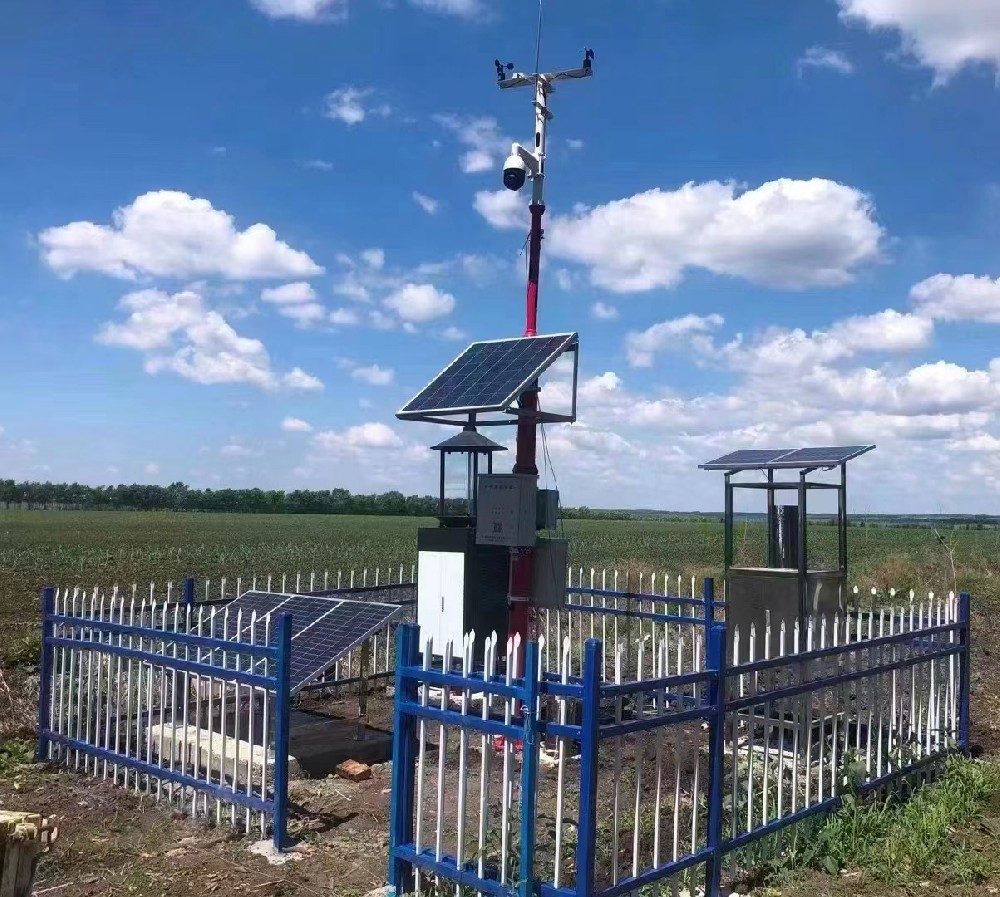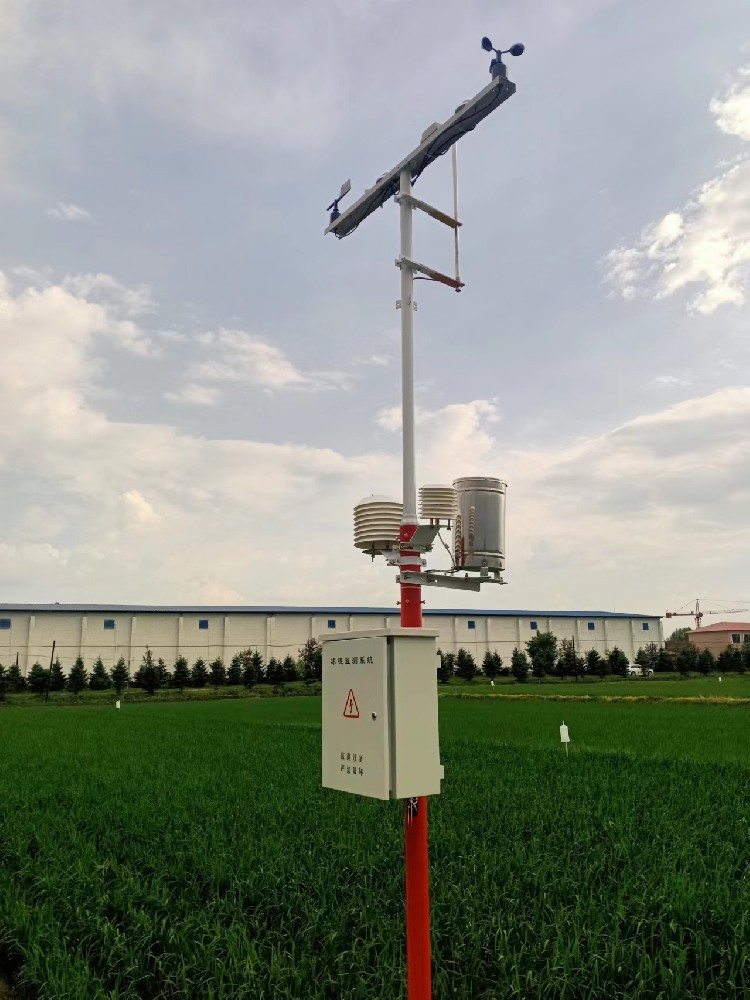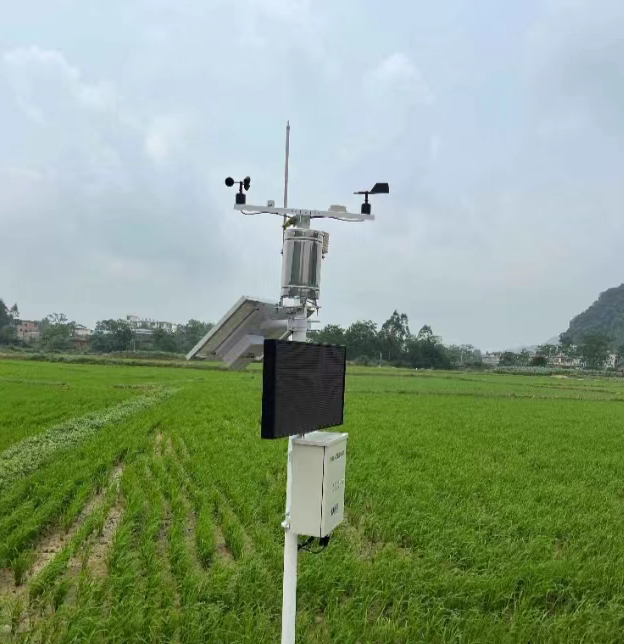

— Blogs —
—Products—
 Consumer hotline +8618073152920
Consumer hotline +8618073152920 WhatsApp:+8615367865107
Address:Room 102, District D, Houhu Industrial Park, Yuelu District, Changsha City, Hunan Province, China
Product knowledge
Time:2024-11-24 16:14:17 Popularity:1142
Agricultural meteorological stations, as an essential part of modern agriculture, have had a profound impact on agricultural production and the lives of farmers. With the development of technology, the application of agricultural meteorological stations has become more widespread, providing strong technical support for agricultural production. This article will detail the applications of agricultural meteorological stations and their contributions to agricultural development.
- Agricultural meteorological stations can monitor real-time meteorological parameters such as temperature, humidity, light intensity, photosynthetically active radiation, CO2 concentration, rainfall, soil temperature and moisture, and evaporation rate. This provides accurate meteorological data to support agricultural production.
- Agricultural meteorological stations offer high measurement accuracy, providing reliable data to help farmers adjust planting plans in a timely manner, improving crop yield and quality.
- Agricultural meteorological stations are not only used in the agricultural sector but are also widely applied in fields such as meteorology, environmental protection, forestry, hydrology, storage, and scientific research.

- Agricultural meteorological stations provide objective, quantitative, and dynamic data for evaluating agricultural climate resources, helping optimize agricultural planting layouts and improving the efficiency of agricultural resource use.
- By monitoring meteorological data in real time, agricultural meteorological stations can issue early warnings for natural disasters such as heavy rain, frost, and drought, helping farmers take effective precautionary measures to reduce disaster losses.
- The data from agricultural meteorological stations provide important references for food security assessments and agricultural insurance, helping protect farmers' economic interests.
- Agricultural meteorological stations enable comprehensive agricultural meteorological intelligence analysis and evaluation for pre-production, during production, and post-production stages, providing all-around technical support for agricultural production.
- Agricultural meteorological stations monitor key meteorological parameters such as temperature, humidity, wind speed, wind direction, and rainfall in real time, allowing early warnings for potential disaster weather events like droughts, floods, frost, and high-temperature heat damage.
- When these conditions approach critical thresholds, the system immediately issues alerts, notifying farmers to take appropriate actions. For example, during frost warnings, farmers can use covers to protect crops; during heavy rain warnings, they can implement drainage systems to prevent waterlogging.
- Agricultural meteorological stations can be linked with other smart devices, creating an intelligent agricultural management system. For example, meteorological stations can seamlessly connect with smart irrigation systems, intelligent fertilization systems, and smart greenhouse control systems through wireless networks (Wi-Fi, 4G, 5G, Lora, etc.).
- When meteorological stations detect a change in weather conditions, they automatically transmit the data to these devices and trigger corresponding actions. For instance, when the soil moisture falls below a set threshold, the meteorological station can activate the smart irrigation system to irrigate the crops; when the light intensity is too high, the station can adjust the lighting control system in the greenhouse to protect crops from excessive light exposure.
- Precision Irrigation and Fertilization: Agricultural meteorological stations provide accurate soil moisture and weather data, helping farmers develop precise irrigation plans, avoiding water waste, and adjusting fertilization strategies according to crop growth cycles and weather conditions to ensure proper nutrient supply, promoting healthy crop growth.
- Optimizing Planting Time: By analyzing historical meteorological data and current weather conditions, farmers can determine the optimal sowing time, avoiding potential disaster weather and ensuring that crops begin growing under the most suitable climate conditions.
- Pest and Disease Management: Early warning of climatic conditions conducive to pest and disease outbreaks allows farmers to take timely biological or chemical control measures to reduce the impact on yield and quality.
- Environmental Regulation: Based on meteorological station data, farmers can adjust the micro-environment of their fields, such as using shade nets or heating facilities to control extreme temperatures, ensuring that crops grow in the most suitable environment, thereby improving yield and fruit quality.
- Reducing Production Risks: Through early warning systems, farmers can effectively avoid disasters, reducing the risk of yield loss caused by weather events, stabilizing production, and increasing the overall economic benefits of agriculture.

An agricultural meteorological station located in an agriculture-based region aims to provide real-time meteorological data to help local farmers make more informed decisions in planting and agricultural management. The meteorological station is equipped with sensors for temperature, humidity, wind speed, wind direction, rainfall, and sunlight hours, and is also equipped with data collection and transmission systems.
The station collects data 24 hours a day, continuously transmitting data to a central processing system. The following is an overview of data collected during one week:
- Temperature: Average temperature of 20°C, highest temperature of 30°C, lowest temperature of 10°C.
- Humidity: Average humidity of 60%, highest humidity of 80%, lowest humidity of 40%.
- Wind Speed: Average wind speed of 5 meters per second, highest wind speed of 15 meters per second, lowest wind speed of 0 meters per second.
- Wind Direction: Variable wind direction, predominantly southeast.
- Rainfall: Total rainfall of 10 mm during the week, primarily concentrated on the weekend.
- Sunlight Hours: Average sunlight hours of 6 hours, maximum sunlight hours of 8 hours, minimum sunlight hours of 4 hours.
1. Temperature Trend Analysis
- Temperature data shows significant fluctuation during the week, with the highest temperature occurring in the afternoon and the lowest at dawn.
- Analysis suggests that early morning and evening are ideal times for farming operations as temperatures are more moderate.
2. Humidity Analysis
- Humidity data indicates higher humidity, especially in the morning and evening.
- High humidity could increase the risk of crop diseases, and farmers are advised to strengthen pest and disease prevention during these periods.

3. Wind Speed and Wind Direction Analysis
- Wind speed data shows relatively high wind speeds, particularly in the afternoon and evening.
- The southeast wind is predominant, which is favorable for crop growth, though it may impact crops that require specific wind conditions.
4. Rainfall Analysis
- Rainfall data indicates limited precipitation, with most rainfall occurring on the weekend.
- Farmers can perform tasks like fertilizing and weeding after the rain, utilizing the increased soil moisture.
5. Sunlight Hours Analysis
- Sunlight hours show a relatively low amount of sunshine, mainly concentrated in the afternoon.
- Morning and evening periods are critical for photosynthesis, and farmers may consider focusing crop management during these times to improve crop yield.
Conclusion
By analyzing the data from the meteorological station, farmers can better understand local weather conditions and adjust planting and agricultural management strategies accordingly. For example, based on temperature and humidity data, they can choose the best planting time; based on wind speed and wind direction, they can adjust crop layouts; based on rainfall data, they can arrange irrigation and fertilization schedules; and based on sunlight hours, they can optimize crop management.

- Strengthening research and development in agricultural meteorological technologies and introducing advanced data processing and analysis methods to improve the accuracy and real-time nature of meteorological data.
- Establishing data-sharing platforms for agricultural meteorology to promote data exchange and collaboration between different departments and fields, increasing the coverage of agricultural meteorological services.
- Governments should increase investment in agricultural meteorological stations, supporting their construction and development to provide strong guarantees for agricultural meteorological services.
- Enhancing the training of agricultural meteorology professionals to improve the technical level and business capabilities of agricultural meteorological service teams.
Conclusion
Agricultural meteorological stations, as intelligent guardians of modern agriculture, help farmers increase crop yield and quality, reduce disaster losses, and promote sustainable agricultural development by providing precise meteorological data and scientific agricultural management advice. With continuous technological advancements, future agricultural meteorological stations will become even more intelligent, not only offering basic meteorological data but also using advanced technologies like machine learning to predict how weather changes affect specific crops, providing farmers with personalized management suggestions. Through ongoing technological innovation and application expansion, agricultural meteorological stations will play an increasingly important role in ensuring food security and promoting sustainable agricultural development.
Related recommendations
Sensors & Weather Stations Catalog
Agriculture Sensors and Weather Stations Catalog-NiuBoL.pdf
Weather Stations Catalog-NiuBoL.pdf
Related products
 Combined air temperature and relative humidity sensor
Combined air temperature and relative humidity sensor Soil Moisture Temperature sensor for irrigation
Soil Moisture Temperature sensor for irrigation Soil pH sensor RS485 soil Testing instrument soil ph meter for agriculture
Soil pH sensor RS485 soil Testing instrument soil ph meter for agriculture Wind Speed sensor Output Modbus/RS485/Analog/0-5V/4-20mA
Wind Speed sensor Output Modbus/RS485/Analog/0-5V/4-20mA Tipping bucket rain gauge for weather monitoring auto rainfall sensor RS485/Outdoor/stainless steel
Tipping bucket rain gauge for weather monitoring auto rainfall sensor RS485/Outdoor/stainless steel Pyranometer Solar Radiation Sensor 4-20mA/RS485
Pyranometer Solar Radiation Sensor 4-20mA/RS485
Screenshot, WhatsApp to identify the QR code
WhatsApp number:+8615367865107
(Click on WhatsApp to copy and add friends)
